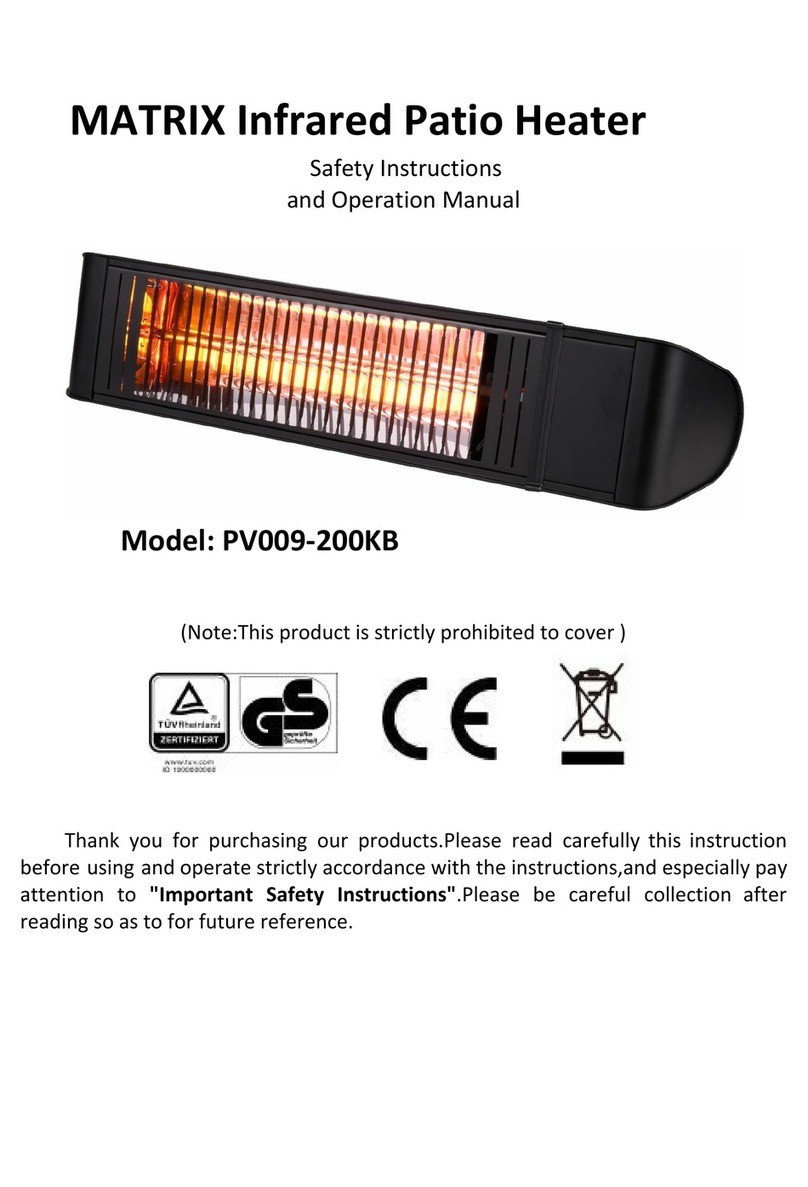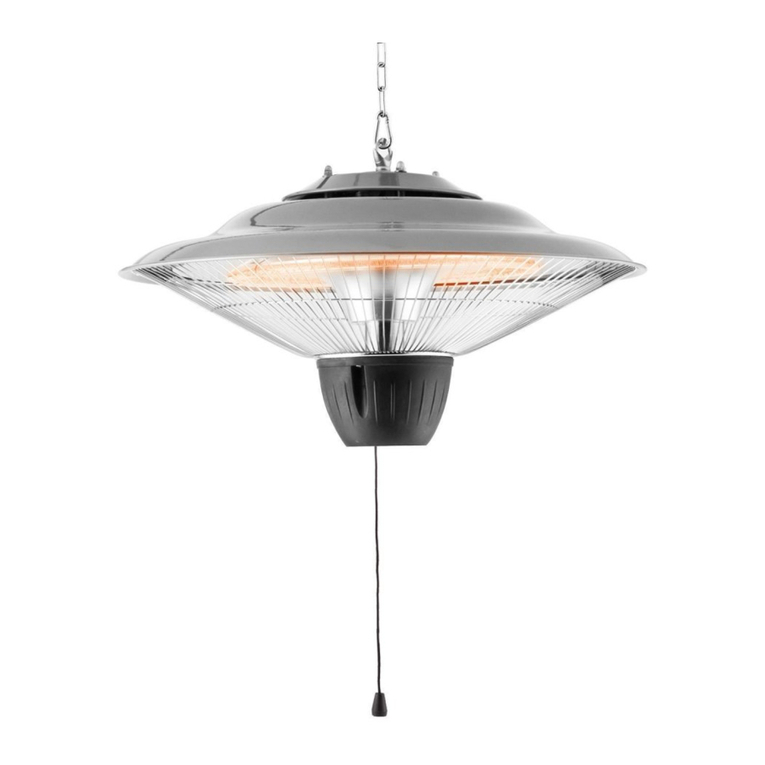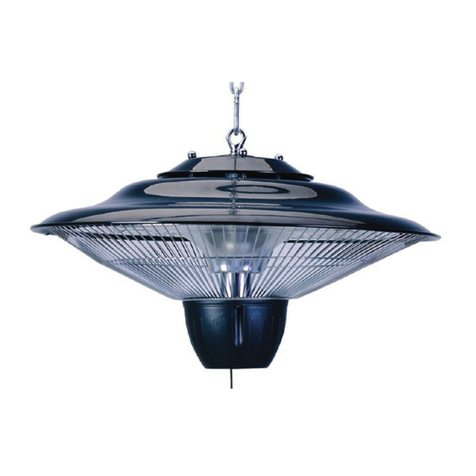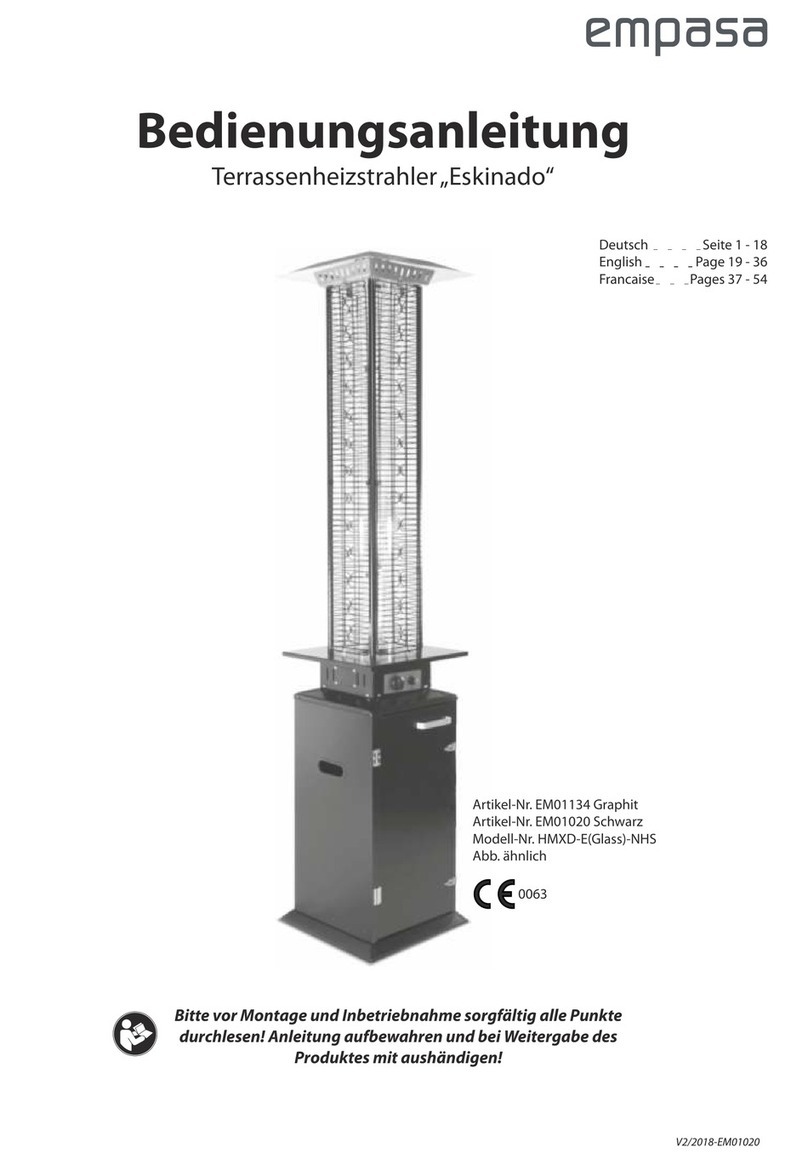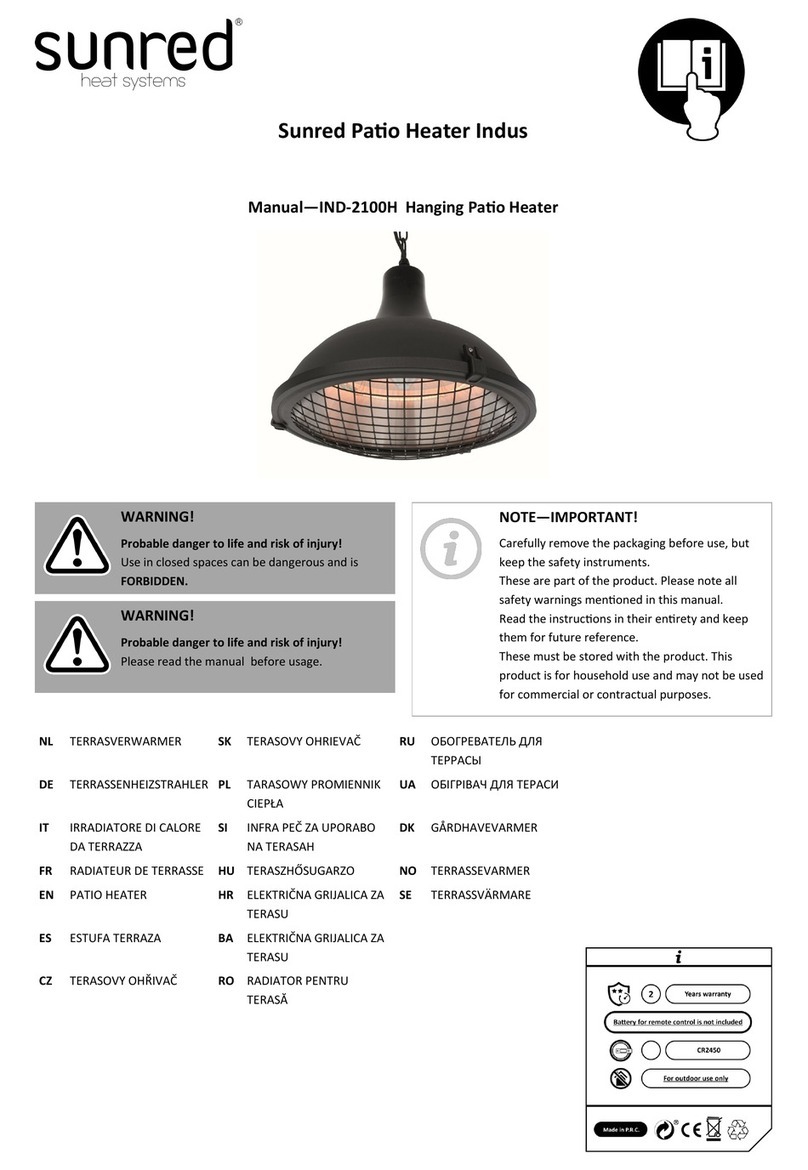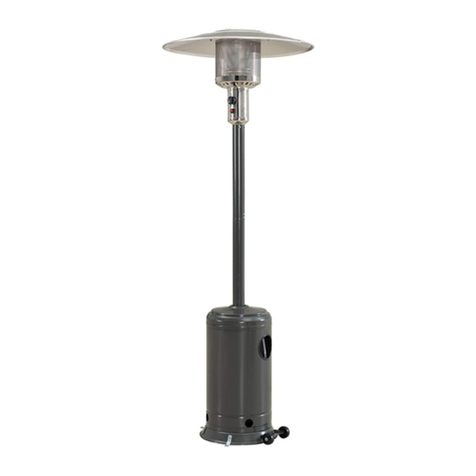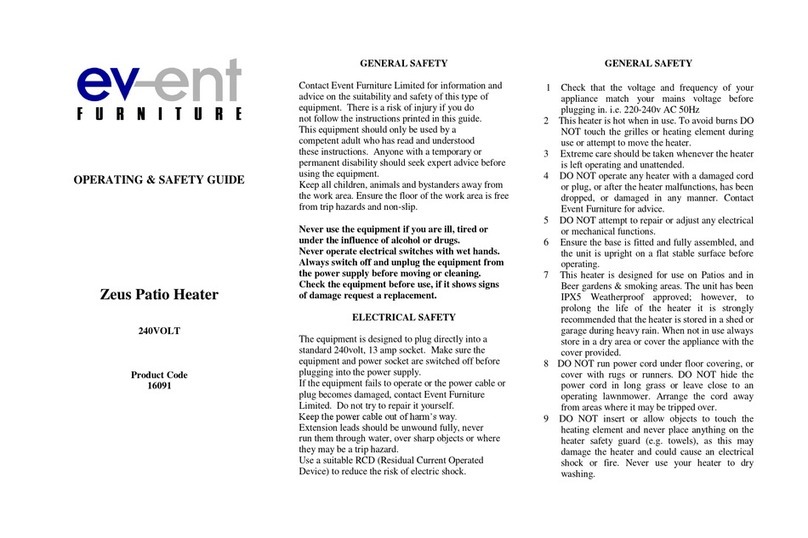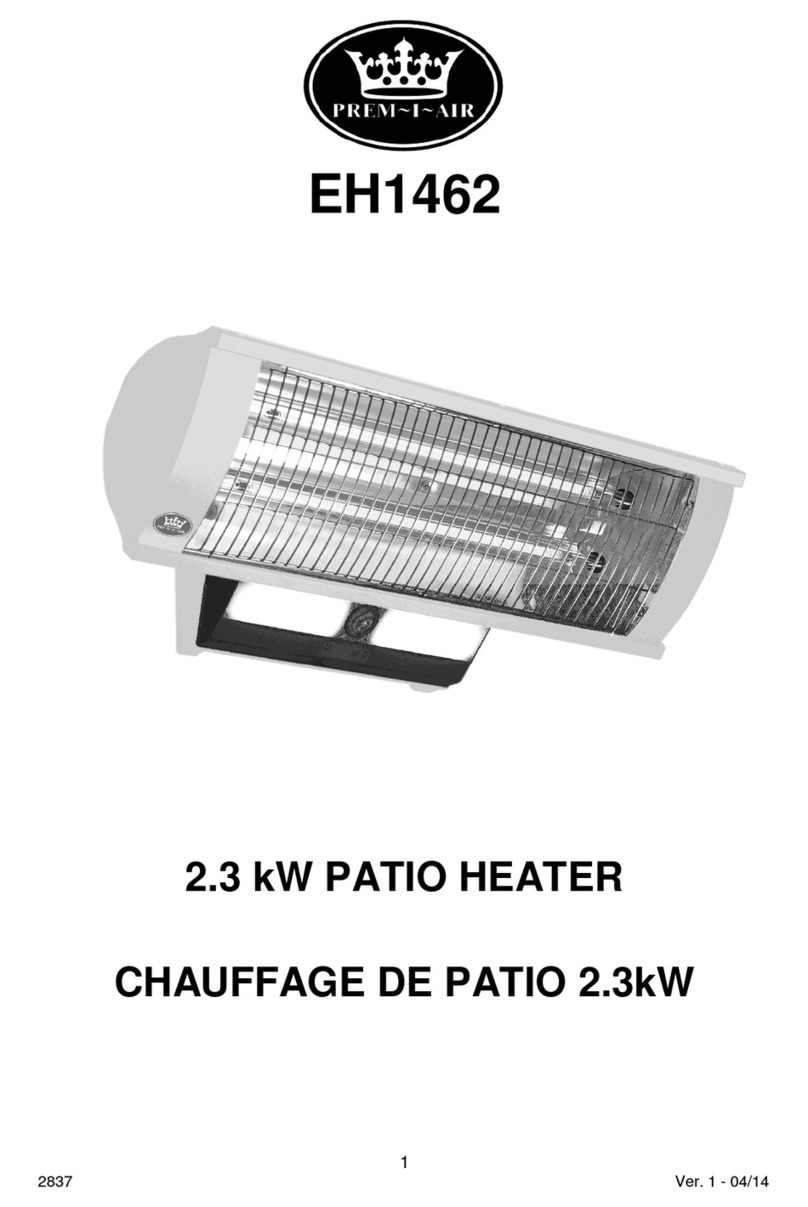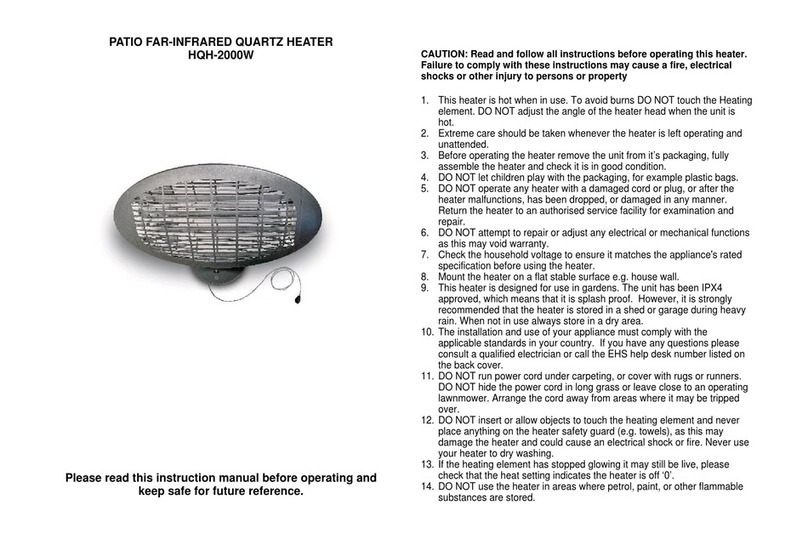
This appliance and its individual shutoff valve must be disconnected from the gas
supply during and pressure testing if that pressure exceeds ½” psig.
WARNING
Natural gas heating valves can vary. It is the responsibility of the installer to
make certain the input rate to the appliance as installed, does not exceed the nameplate
rating. Failure to do so can cause appliance failure, resulting in injury or death. The
maximum BTUH input capacity is shown on the rating label and this must not be
exceeded.
WARNING
Never attempt to modify this heater in any manner. Explosion, fire, asphyxiation
may result. Any changes will void warranty.
This appliance has been tested and approved in accordance with
CAN / CGA B – 149 in Canada or the National Fuel Gas codes ANSI Z83.20 / CSA
2.34 (2008) and ANSI Z83.20A / CSA 2.34 (2010) for gas burning appliances.
“The Purple People Heater” Patio Plus Radiant Tube Heater is designed for
indoor or outdoor use providing resistance to wind and rain. The slim design and
horizontal or angle mounting option provides versatility to fit almost any patio situation.
The installation of “The Purple People Heater:” must only be performed by a licensed
technician, trained and educated in the installation of this type of gas appliance.
INFRARED HEAT
“The Purple People Heater” heaters are effective in heating outdoor spaces
because they utilize infrared or radiant heat. Infrared energy is the same type of energy
we get from the sun. Infrared energy warms people and objects without heating the
intervening air. Unlike the sun, “The Purple People Heater” does not produce Ultraviolet
(UV) rays than can be harmful. Infrared energy travels by line of sight so the designer
must be aware that doors, panels or windows may obstruct the infrared energy from
reaching the desired location. Overlapping infrared patterns from numerous heaters
may be use effective to provide even heat distribution.
CLEARANCES AND SAFE MOUNTING DISTANCES
“The Purple People Heater” must be installed so that the minimum clearances to
combustibles are maintained. Combustible materials are considered to be wood,
compressed paper, plant fibres, or other materials capable of being ignited and burned.
Such materials shall be considered combustible even though flame proofed, fire
retardant, treated or plastered. Additional clearances may be required for glass, painted
surfaces, plastics, vinyl’s and other materials which may be damaged or melted by
radiant or convections heat.


